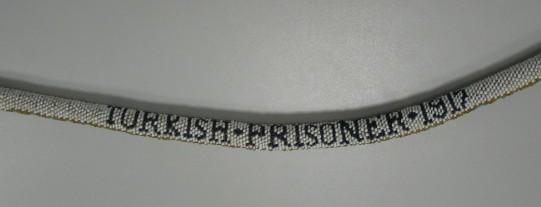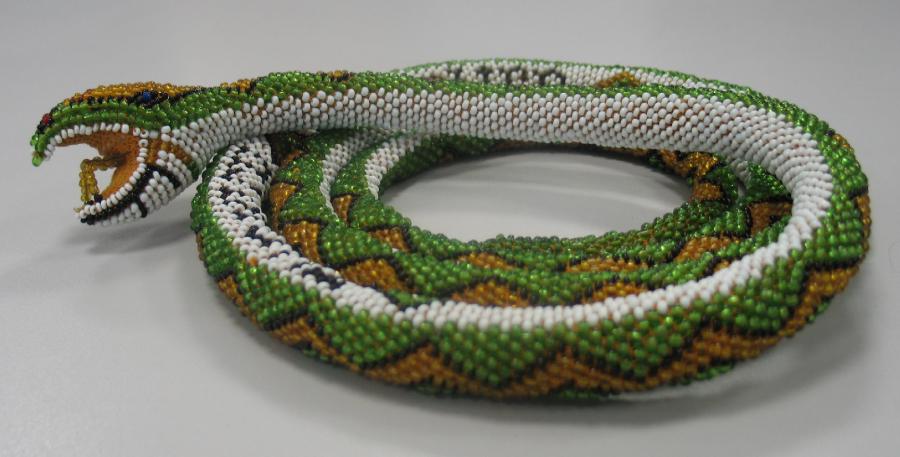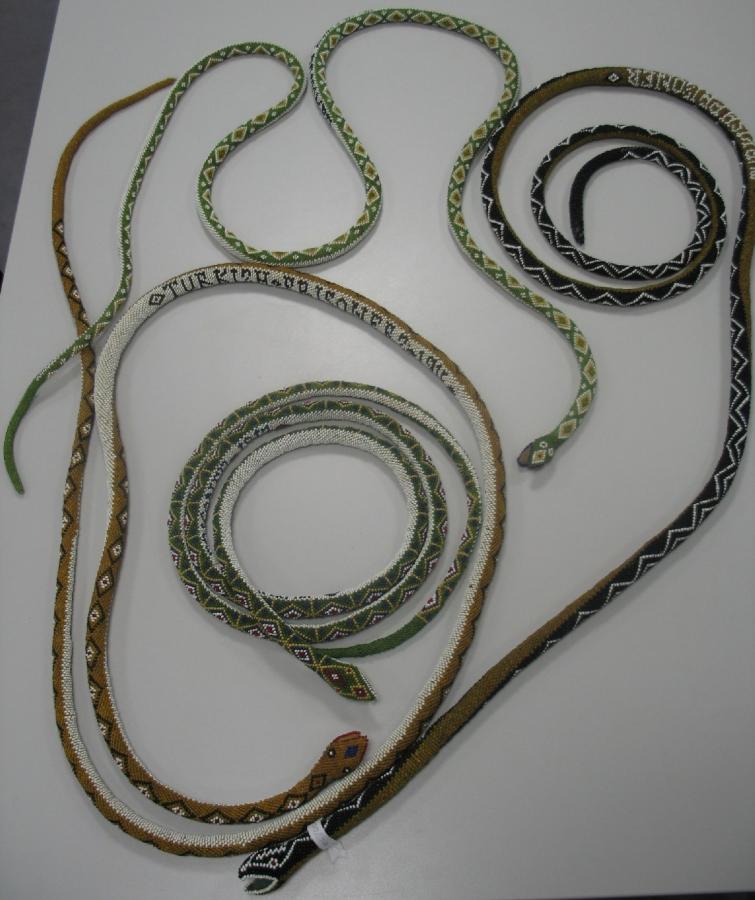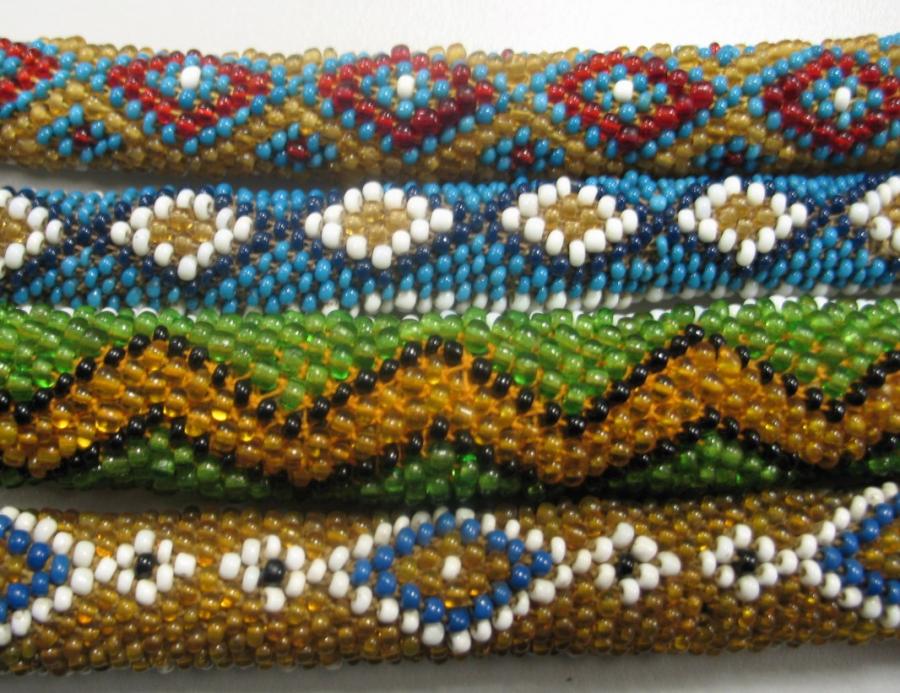Ottoman prisoner of war beadwork
I normally reside in the Research Centre, working with Mal and Robyn, but for the past five months I have been working in the Memorial’s Military Heraldry and Technology section (MHT). MHT's collection includes uniforms, medals, souvenirs, trench art, weaponry, vehicles and other interesting items. Some items from the MHT collection have been selected for display in Lawrence exhibition. Of the items selected, my favourites are the beadwork items made by Ottoman Prisoners of War in British POW camps.
Ottoman prisoners made many items whilst in captivity. It kept them occupied and was an avenue for them to earn money to supplement their rations and purchase items they required. Some prisoners even sent them home as gifts for family members or used them to barter with other prisoners.
The Memorial's collection of Ottoman prisoner beadwork includes snakes, lizards, bags, bookmarks and jewelry. All were handmade with small glass beads using either beaded crochet method or weaving on small looms. Crochet beaded snakes were the most popular of the beaded souvenirs created in the prisoner of war camps. Nearly half the Memorial's collection of beadwork items is made up of snakes. This is probably for two reasons, firstly a snake is basically a tube, a very easy shape to make with bead crochet. Secondly, snakes were a symbol of good luck in parts of South East Europe, so the prisoner of war snakes could have had a symbolic importance for their makers.
There are two basic designs beaded on the backs of the snakes: zigzag or diamond designs. The bellies of the snakes are generally white, with beaded text in black or dark blue. Sometimes other colours were used - the Memorial holds one snake with a gold belly and white beaded text. The text on the belly usually says ‘TURKISH PRISONER’. However this does not mean that all the prisoners who made the items were ethnically Turkish. The Ottoman Empire stretched from the Balkans to the Sinai. This means that the makers could have been Turkish, Kurdish, Arab, Greek, or Eastern European.
It seems that wherever there were major prisoner of war camps holding Ottoman prisoners, beadwork items were made. Beadwork is known to have been made in camps in Egypt, Great Britain, Salonika, France, Mesopotamia as well as other locations. The Memorial holds a snake believed to have been made in Malta in 1915. Unfortunately, for most beadwork items, the information of where they were made has been lost as it wasn't passed down through the families of the people who bought them. As there are similarities in designs and technique between camps and countries, it can be difficult to know where the items were made.
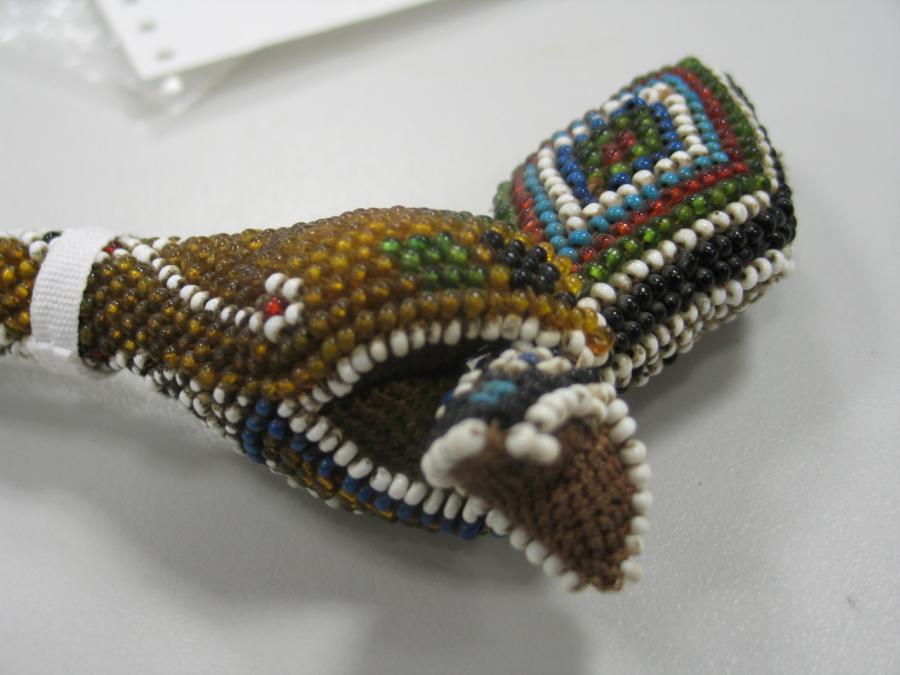
The Memorial holds an example of a snake with a beaded lizard in its mouth. The lizard was made using the same techniques as the snakes. The lizard was specifically made to be sewn into a snake's mouth. When donated in 1990 the lizard no longer had its legs (although a small section of one of the legs is still attached), so it was originally mistaken for a fish.
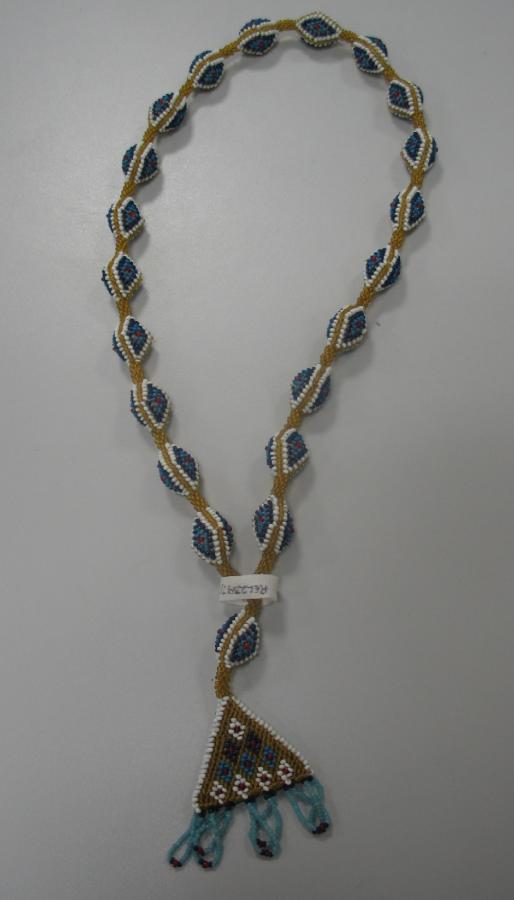
Four beaded items have been selected for display in our exhibition. One of the more beautiful and colourful of the beadwork snakes will go on display. It has a variation on the diamond design on its back, which is similar to a traditional Turkish sock pattern. An interesting crochet beaded bag has been selected with the image of a lion rampant. The bag is associated with Mrs Eleanora Mary Eedy of Botany, NSW. Her husband, William Ferrier Eedy and four sons, Peter, George, Ronald and Neil all served in the First World War. Ronald was killed in action at Passchendaele on 22 October 1917. A loom-work bookmark belonging to Major Oliver Hogue ('Trooper Bluegum'), who served with the 6th and 14th Light Horse Regiments and the Imperial Camel Corps, has also been selected, along with a necklace collected by the Australian War Records Section in 1919.
It has only been recently that we have been able to find out more about the Turkish beadwork. In the last few years books have been published that have very useful information about the craft. The two books in question are ‘Bead Crochet Snakes: History and Technique’ by Adele Rogers Recklies and ‘Trench Art: an Illustrated History’ by Jane A. Kimball.
